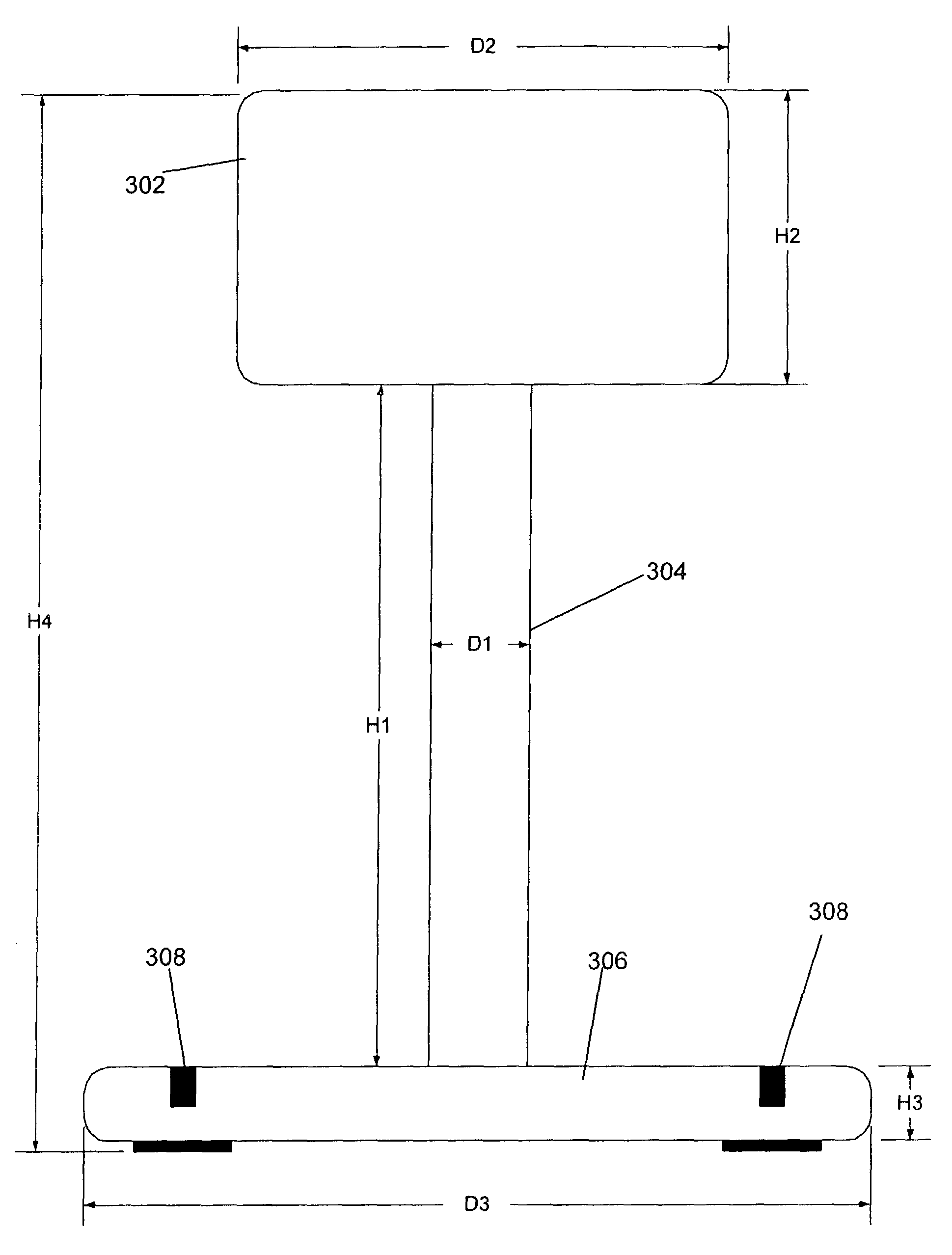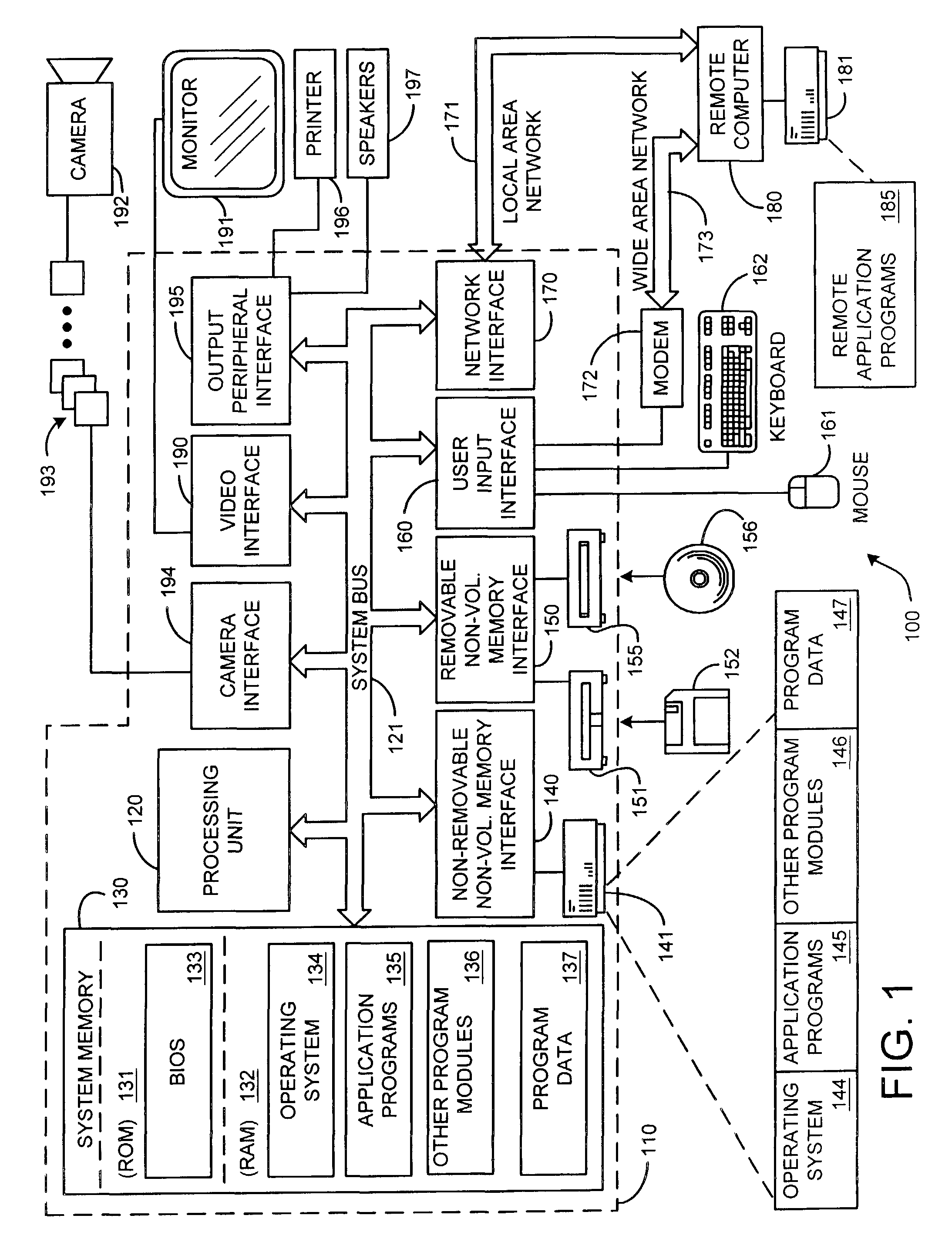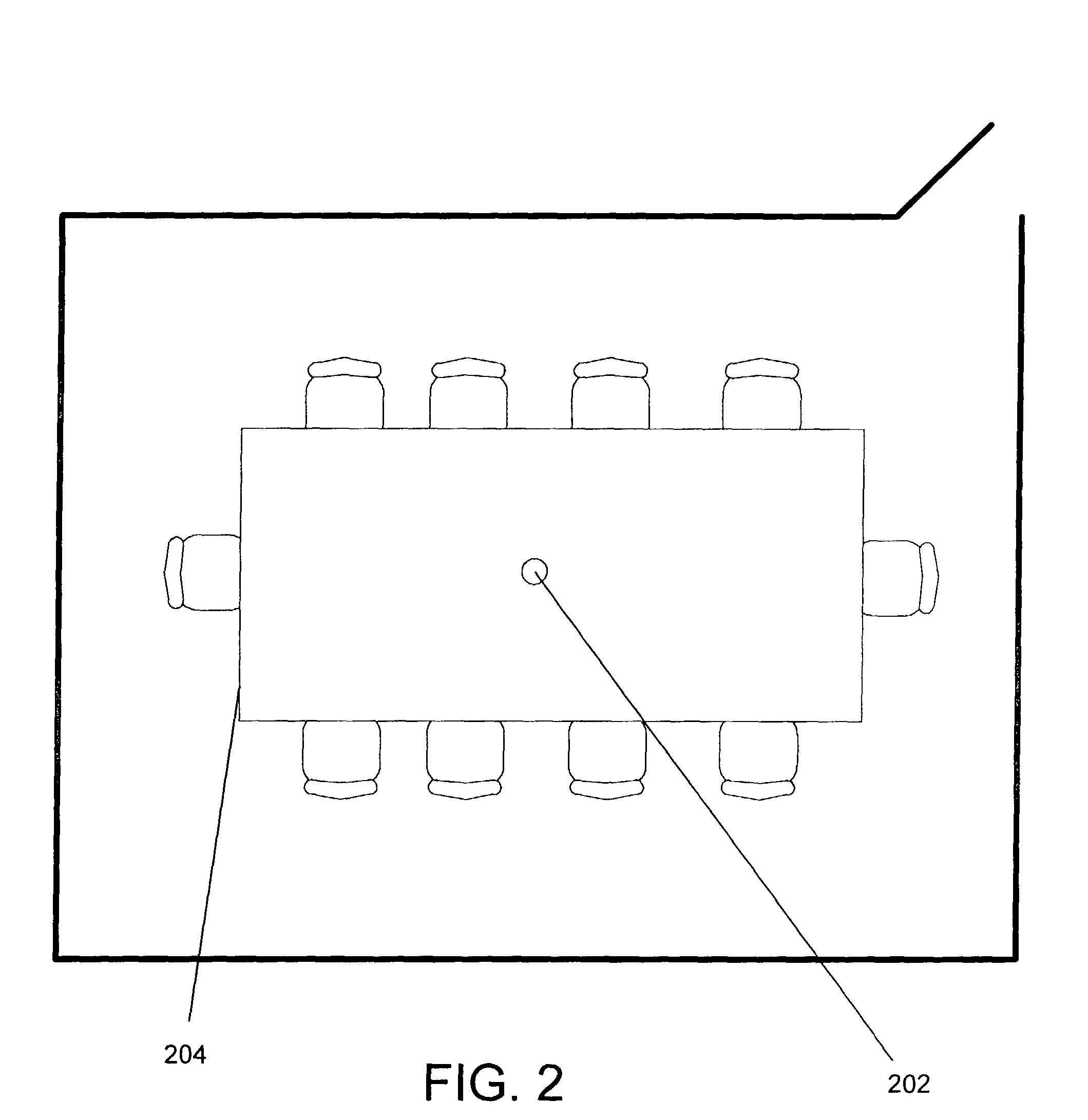Integrated design for omni-directional camera and microphone array
a technology of omni-directional cameras and microphone arrays, applied in two-way working systems, television conference systems, television systems, etc., can solve the problems of limited commercial success of video conferencing systems, insufficient image resolution, technical deficiencies, etc., and achieve the effect of enhancing the video and audio data captured
- Summary
- Abstract
- Description
- Claims
- Application Information
AI Technical Summary
Benefits of technology
Problems solved by technology
Method used
Image
Examples
exemplary working embodiment
5.0 Exemplary Working Embodiment
[0071]One working embodiment employing the camera 502 and microphone array 504 of the invention is shown in FIG. 5. The image output of the camera 502 and the audio output of the microphone array 504 is routed via an analog to digital converter 506 to a computer 508. The computer 508 performs various functions to enhance and utilize the image and audio input. For instance, a panoramic filter module 510 stitches together images that are taken by various sensors in the omni-directional camera 502. Additionally, the image data can be compressed by a compression module 512 to make it more compatible for broadcast 514 over a network (such as the Internet) or saved to a computer readable medium 516 (preferably via a splitter 520). Optionally, the image data can also be input into a person detector / tracker module 522 to improve camera management 524. For instance, the portions of the image / video containing the speaker can be identified, and associated with t...
PUM
 Login to View More
Login to View More Abstract
Description
Claims
Application Information
 Login to View More
Login to View More - R&D
- Intellectual Property
- Life Sciences
- Materials
- Tech Scout
- Unparalleled Data Quality
- Higher Quality Content
- 60% Fewer Hallucinations
Browse by: Latest US Patents, China's latest patents, Technical Efficacy Thesaurus, Application Domain, Technology Topic, Popular Technical Reports.
© 2025 PatSnap. All rights reserved.Legal|Privacy policy|Modern Slavery Act Transparency Statement|Sitemap|About US| Contact US: help@patsnap.com



